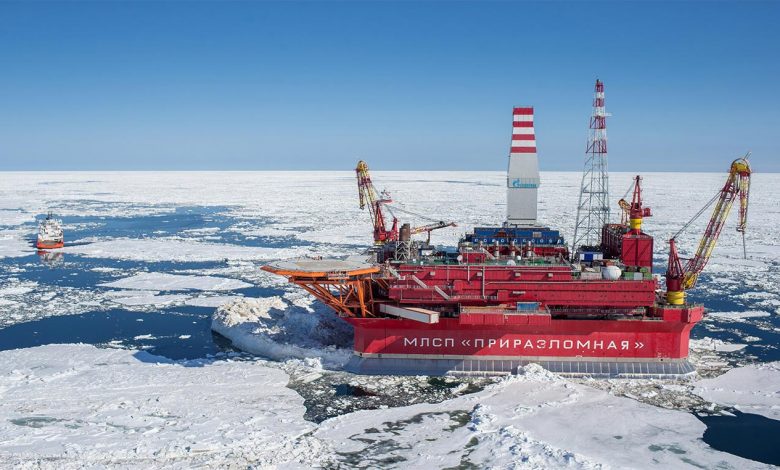Canada’s Unlawful Attempt to Convey Sovereignty over the Oil-Rich Arctic

Unlawful Exploitation
Throughout the 20th and the 21st centuries, the Canadian government has repeatedly strived to convey their sovereignty over Arctic oil fields by maintaining an effective occupation of the region. In order to combat the threats to their sovereignty, the Canadian government unlawfully exploited indigenous populations.

The Race for Natural Resources
Climate change has jumpstarted the race to find oil, gas, and other natural resources in the Arctic, which will inevitably lead to another redrawing of the world map (Struzik, 2009). The U.S. Geological Survey estimates that 30 billion barrels of oil lie under the ice and the frigid waters of the North American Arctic (Elliot-Meisel, 2009). The Canadian government has been fighting international pressure about sovereignty over the resource-rich region. Foreign governments have blatantly refused to recognize Canada’s sovereignty and have trespassed throughout the Canadian Arctic without the permission of the nation-sate, which many Canadians view as a clear exploitation of their Arctic territory.

The Prolonged Struggle
Since the early 20th century, Canadians have endured a prolonged struggle to convey their ownership of the fossil fuels that lie within the Arctic region. The first direct threat pertaining to Canadian sovereignty in the Arctic was settled in 1930 when the Canadian government paid a Norwegian explorer $67,000 to recognize Canada’s ownership of the entire archipelago (Grant, 1990). Although in 1934, only four years after this agreement, twenty-two indigenous Inuit were relocated from Cape Dorset to Devon Island in the High Arctic (Mowat, 2002). The government’s explanation for this redistribution was to move the Inuit to an area where there would be more abundant work and for increased hunting and trapping opportunities.
Inuit Relocation
After a year of living on Devon Island, the conditions proved to be too harsh for the Inuit, since many perished. However, instead of being taken back to Cape Dorset, the Inuit were repeatedly shipped to new islands throughout the Arctic. Each new transfer ended in failure. Tragically many of the Inuit died from starvation, or were lost in the harsh Arctic conditions. Today, many people believe that this action was simply aimed to solidify Canada’s sovereignty over the Arctic Archipelago because, just seven years after the failed experiment, the Canadian government tried to do it again.

Continued Exploitation
In 1953, the Canadian government decided to relocate Inuit from northern Quebec to more than 2,000km north to the High Arctic (Hazell, 1991). The government said this experiment was designed with the intention of seeing how the Inuit could survive in the far north. However, researchers and historians believe that the real motive behind this relocation of indigenous Canadians was to alleviate sovereignty threats through land occupation. With the Inuit occupying the High Arctic, the Canadian government felt that Denmark, Norway, Russia, and the United States would be discouraged from making land claims and ultimately extracting the billions of barrels of oil.

Staking Claim to the Region’s Fossil Fuels
The Inuit were the Canadian government’s most effective resource to prevent international governments from staking claim to the region’s fossil fuels. Even today, the Inuit still play a major role in the ongoing argument for Canadian sovereignty. The Canadians argue that the Northwest Passage can’t be used as an international waterway because the Inuit still make use of it when it is completely frozen during the winter months, turning the area into an extension of the land. If the Inuit didn’t hunt and live on the ice, the Law of the Sea would give other countries the right of passage. While the Inuit continue to be a tremendously important factor in Canada’s fight for Arctic oil, the international community has continued to express concerns over the Canadian government’s exploitation of indigenous populations to seize opportunities to protect its fossil fuels.
Sources
Elliot-Meisel, E. (2009) “Politics, Pride, and Precedent: The United States and Canada in the North.” Ocean development and international law, 40: 204-232
Grant, S. (1990) “A Case of Compounded Error: The Inuit Resettlement Project, 1953, and the Government Response, 1990.” Destinies: Canadian History Since Confederation, (4th edition).
Hazell, S. (1991). “The High Arctic resettlement experiment: A question of fundamental justice.” Northern Perspectives, 19: 30-1
Mowat, F. (2002). “White Man’s Law.” Canadian Geographic, September/October: 66-74
Struzik, E. (2009). “The Arctic Age.” Great Decisions, 4: 41-52



